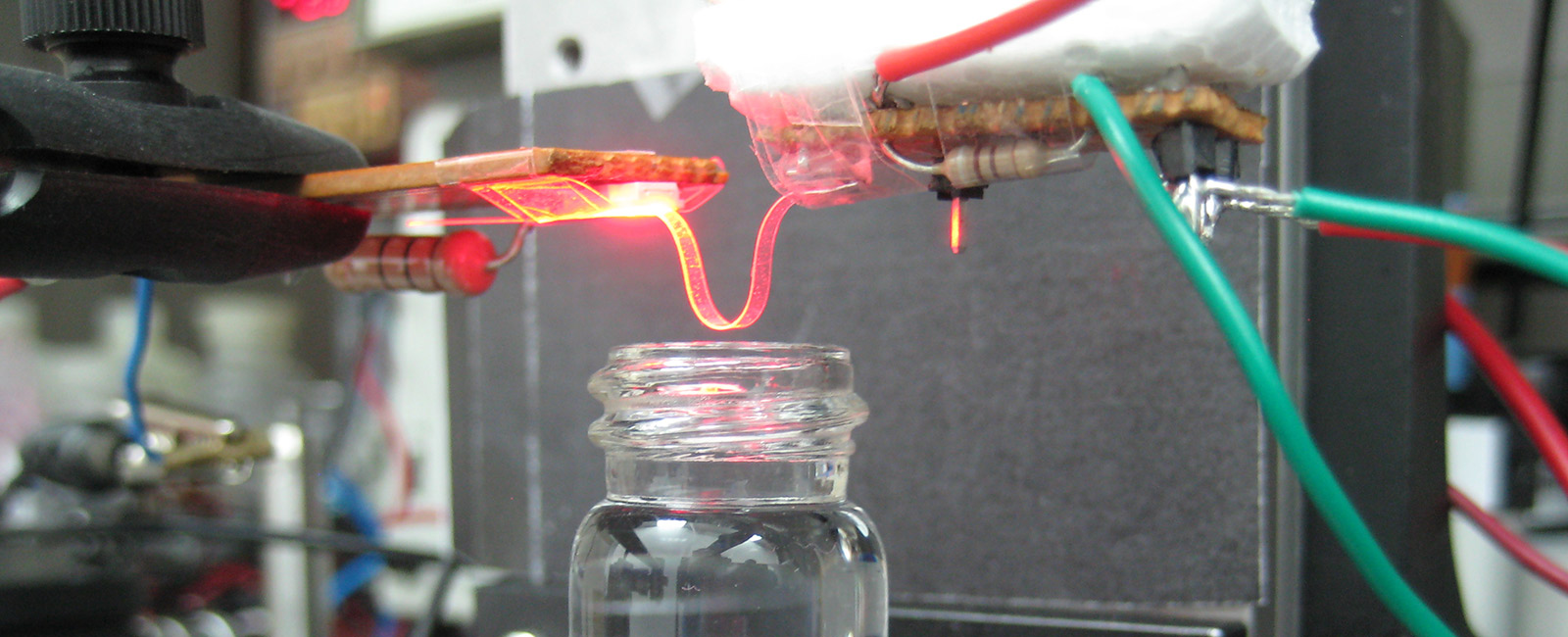
A sensor made of scotch tape for controlling food and water quality
Carlos Angulo, beneficiary of a BBVA Foundation grant, has produced an innovative optical sensor made of common or garden adhesive tape (scotch tape), which can be submerged in a liquid to detect variations in its optical properties. This invention can be used for quality control of liquid foods and in environmental monitoring.
9 June, 2017
The sensor consists of a waveguide formed by a length of scotch tape. Light from an LED (light emitting diode) is introduced at one end, and the light emerging from the other is detected by means of a photodiode (which converts the light it receives into electric current).
As the tape is flexible, the waveguide can be bent into a U shape and partially submerged in the liquid to be tested. Because of the bend, some of the light propagating through the guide will be lost through radiation. These curvature losses depend on the optical properties – refractive index – of the surrounding medium, in this case the liquid in which the waveguide is submerged. It is by this means possible to detect variations in the liquid’s refractive index using the photodiode to measure the optical power lost during the light’s passage through the submerged guide.
The refractive index of a liquid solution depends on its physical and chemical properties, such as density and concentration. We could measure the ripeness of a grape, for instance, through the refractive index of its juice, or the alcohol content of certain drinks. It is this capability that underpins the sensor’s applications in the food industry (process control and quality control of drinks) and the environment (water quality control).
The materials and components used in its manufacture are both common and extremely cheap. Further, its three main component – scotch tape waveguide, LED and photodiode – are simple to assemble, with no need for specialized instrumentation or tools, so it can be quickly put together by unskilled personnel. Angulo explains that “these characteristics, and the flexibility of the tape, give the new sensor a number of advantages over more sophisticated and expensive rigid optical refractometers, especially for field applications and in situ analysis of liquids in less accessible spots.”
For Angulo, the BBVA Foundation grant has been vital to the project’s success. “The material acquired allowed me to upgrade my laboratory equipment, which means I can go on pursuing the research line initiated with this project, looking deeper into the properties of the optical systems developed and optimizing their capabilities.”
The results of the project have been published in international journals including Optics Letters, Micro Machines, Optics Communications and Sensors.
